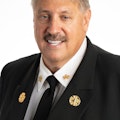In August 2010, three major fire organizations — the International Association of Fire Chiefs (IAFC), International Association of Fire Fighters (IAFF) and Metropolitan Fire Chiefs Association, commonly known as the Metro Chiefs — issued an advisory to their members concerning recent activities by American Medical Response (AMR) in response to its recent interactions with governments in several metropolitan areas.
AMR is a large private ambulance company, publicly traded on the New York Stock Exchange under the symbol EMS. According to its website, AMR has nearly 17,000 paramedics, EMTs, nurses, doctors and support staff and operates in more than 200 communities. The Metro Chiefs is a section of the IAFC and the National Fire Protection Association (NFPA). Membership is limited to the chief of a department with at least 400 fully paid firefighters.
The advisory was developed by the three organizations and each sent the advisory to its members. In essence, the advisory spoke of AMR proposals or discussions with several major cities in the weeks leading up to the advisory. The cities where AMR spoke to or made proposals to officials are Cincinnati, OH; Dallas, TX; and Los Angeles, CA.
The proposal delivered to Dallas is titled "EMS Solutions for the City of Dallas." After the introduction, the document says, "Private-sector contractors are typically more efficient than fire departments providing ambulance services because of five facts." The five facts the proposal to Dallas listed included; "The Right Personnel for the Right Job." The paragraph below this bullet contends that private-sector employees are not compensated with the high salaries and benefits offered to firefighters. Thus, as written in the document, "Dallas does not need to have firefighters doing non-firefighter work at firefighter-based wages and pension plans."
AMR classifies firefighters performing EMS work as "non-firefighter work." Apparently, AMR does not realize that performing EMS delivery is one of the core missions of the fire service and some fire departments have been delivering medical care and ambulance service to the community since the 1920s. In fact, the largest provider of emergency medical service in the United States is the fire service, when you consider the number of fire department ambulance services and first-response apparatus distributed throughout the country that deliver EMS services.
The second bullet point is "Improved Productivity." This paragraph goes on to say that private-ambulance paramedics are more productive and less fatigued than fire department paramedics because of a different operating strategy. I do not know how you can be less fatigued when you are sitting in an ambulance in a 7-Eleven parking lot between calls, but that is AMR's assertion. Additionally, I do not know how you can claim "improved productivity" when a patient who is trapped in a car from an accident, stuck in an elevator hyperventilating or any other predicaments must wait for firefighters to rescue them while the AMR paramedics have to wait outside with the stretcher for the patient to be brought to them.
Another claim in the AMR document to Dallas is that government accounting is different from commercial accounting. This may come as a shock to AMR executives, but generally accepted accounting principles (GAAP) are standard within the government and commercial sectors. Government accountants and private-sector accountants are all trained and educated at the same colleges. There is no difference. What AMR fails to mention in its accounting-principles argument is the free labor and expertise it would receive from fire departments providing first response, sometimes sending one or two firefighters in the back of an AMR ambulance to the hospital with a patient in critical condition.
Another bullet point in the AMR proposal contends that fire departments consume taxes while private, commercial providers pay taxes. Most fire departments charge insurance carriers for transport services. By doing so, they pass on the cost to the end user. The dollars paid to AMR leave the community and go back to AMR's corporate headquarters.
Many agree that Cincinnati, Dallas and Los Angeles are just the start of something bigger to come, as 40 million people are added to the insurance rolls over the next several years because of the landmark healthcare legislation that was signed by President Obama in March. Most of the uninsured are in metropolitan areas and those markets will be prime picking for the likes of AMR.
GARY LUDWIG, MS, EMT-P, a Firehouse® contributing editor, is a deputy fire chief with the Memphis, TN, Fire Department. He has 33 years of fire-rescue experience. Ludwig is chair of the EMS Section for the International Association of Fire Chiefs (IAFC), was appointed to the National EMS Advisory Council by the U.S. Secretary of Transportation and is a member of the International Association of Fire Fighters (IAFF) EMS Standing Committee. Ludwig has a master's degree in business and management and is a licensed paramedic. He is a frequent speaker at fire and EMS conferences nationally and internationally and can be reached through his website at www.garyludwig.com.
About the Author
Gary Ludwig
GARY LUDWIG has served in three fire departments over his career: St. Louis, Memphis, and Champaign, IL. His fire, EMS and rescue career spanned a total of 46 years, and he has been a paramedic for over 44 years. Ludwig served as president of the International Association of Fire Chiefs in 2019-20. He has a Master’s degree in Business and Management, has written over 500 articles for professional fire and EMS publications and is the author of seven books.
Connect with Gary
Email: [email protected]
Facebook: Gary Ludwig
Twitter: @ChiefGaryLudwig
Website: garyludwig.com
